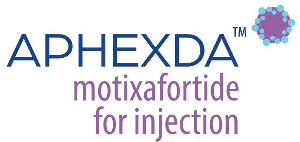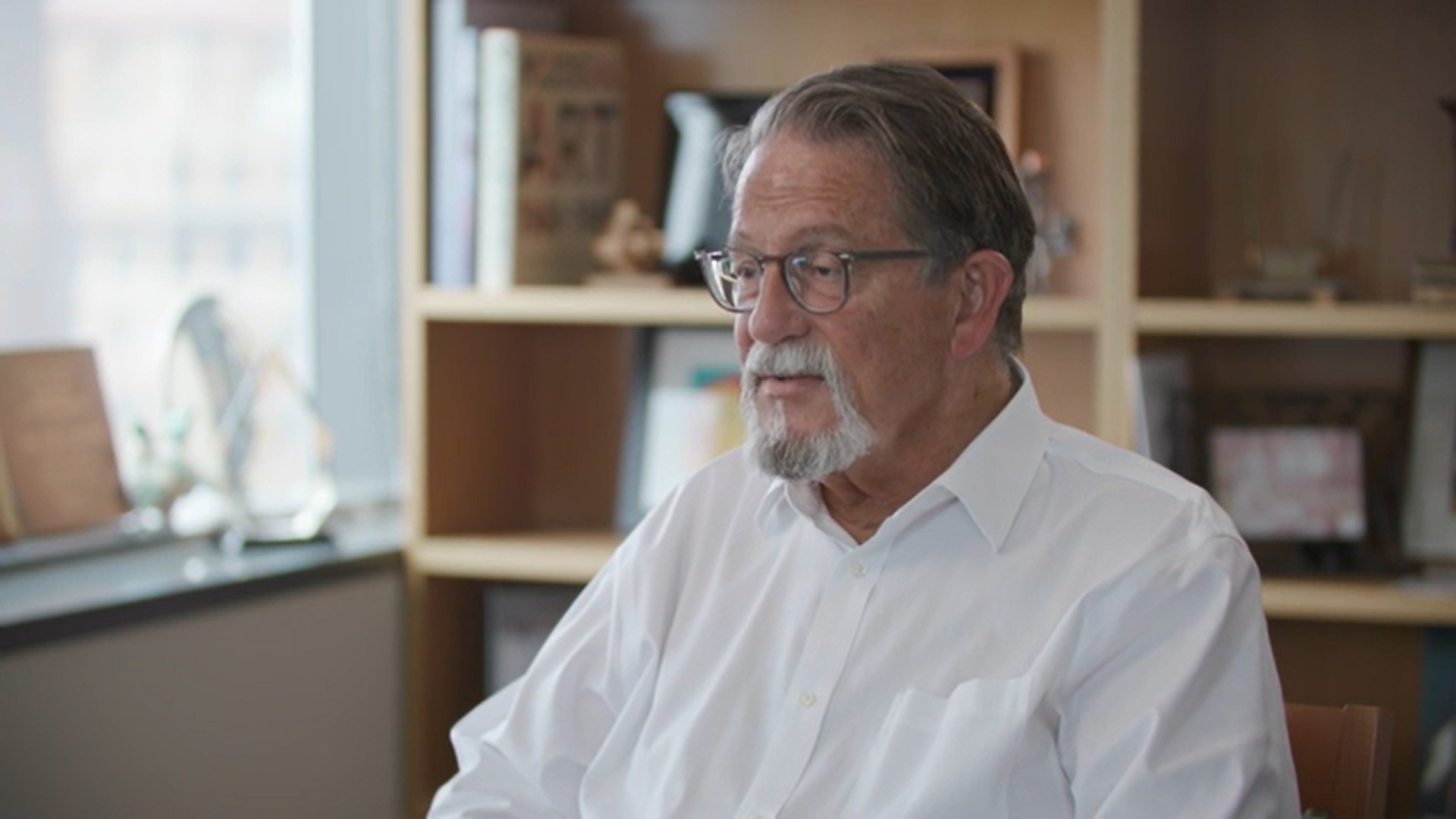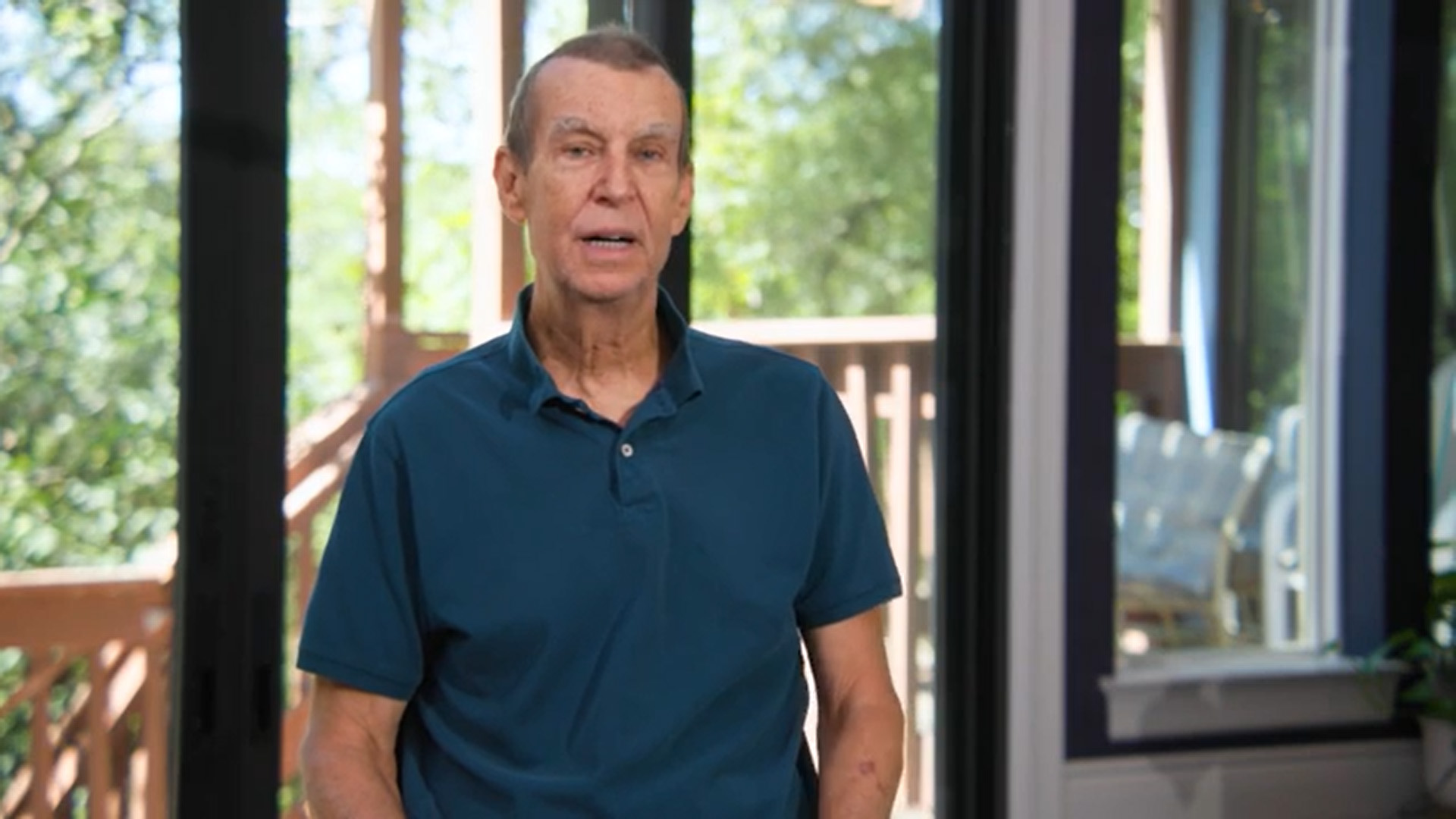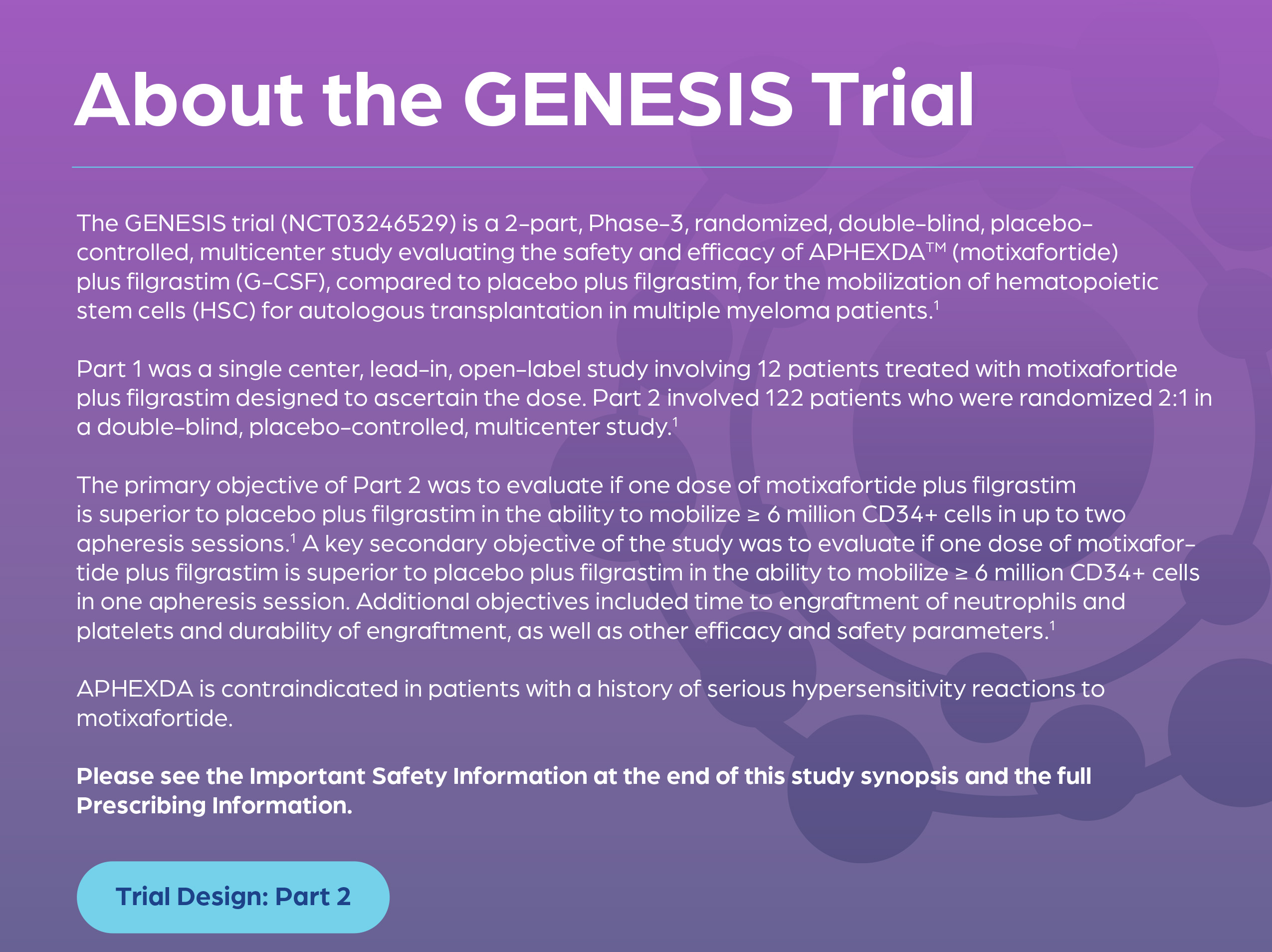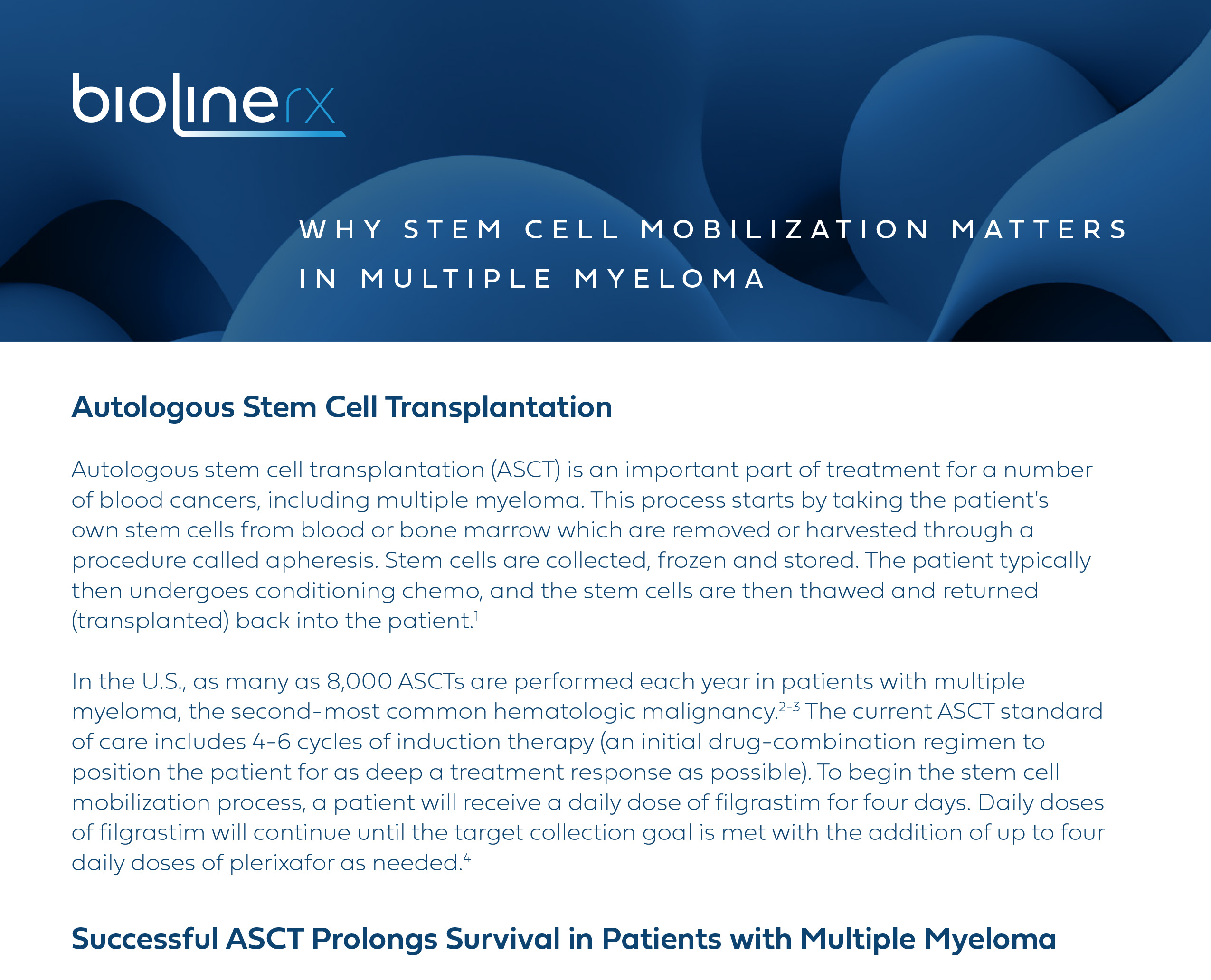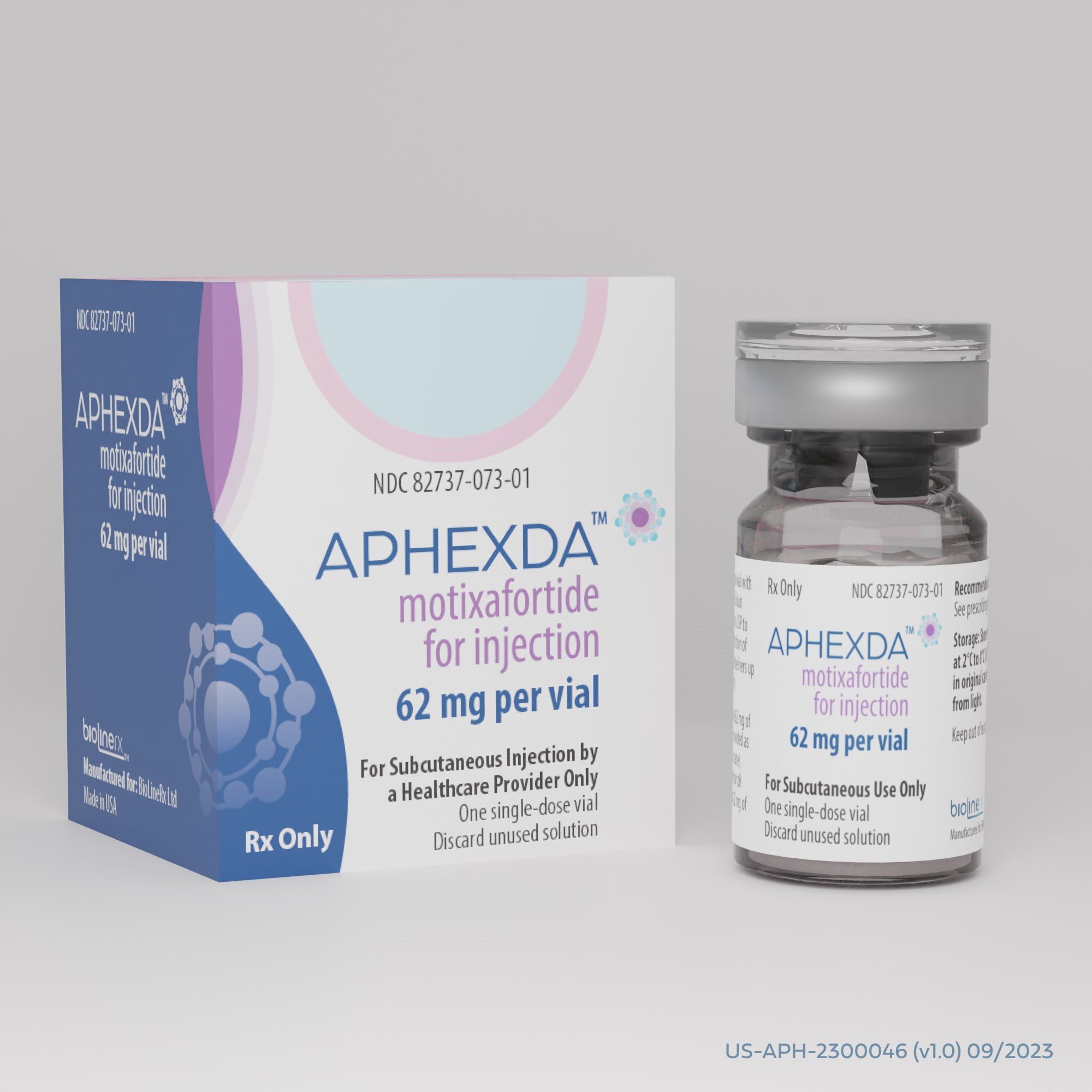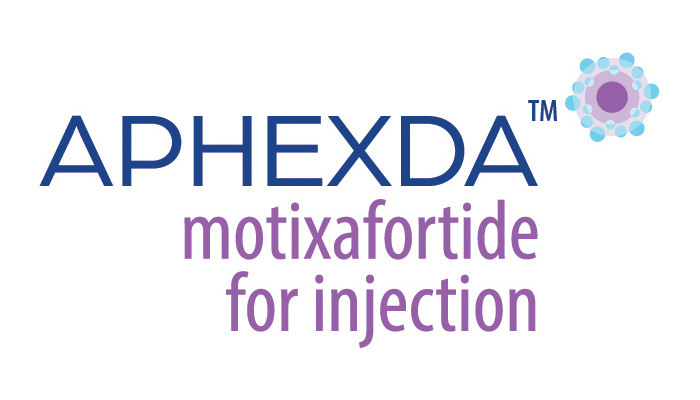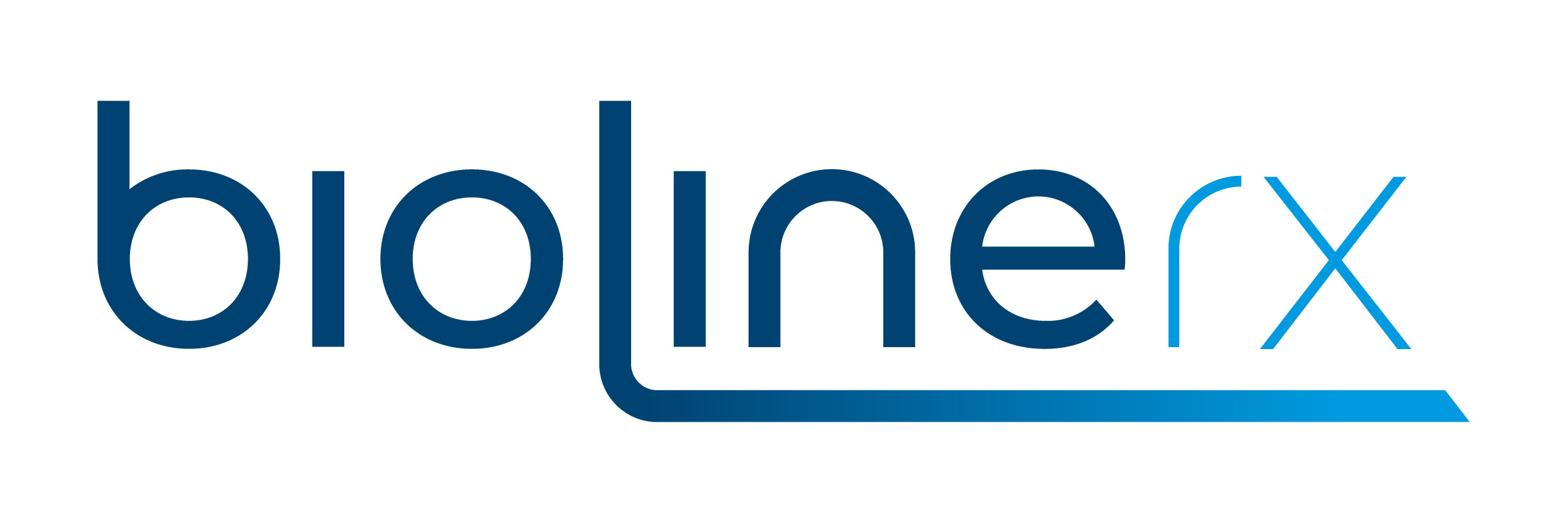BioLineRx Announces FDA Approval of APHEXDA™ (motixafortide) in Combination with Filgrastim (G-CSF) to Mobilize Hematopoietic Stem Cells for Collection and Subsequent Autologous Transplantation in Patients with Multiple Myeloma
- APHEXDA is the first innovation in stem cell mobilization for multiple myeloma to be approved in the U.S. in a decade -
- One dosage of APHEXDA plus filgrastim enabled a majority of patients to achieve the collection goal of ≥ 6 million hematopoietic stem cells among a contemporary population of multiple myeloma patients -
- Management to hold conference call on Tuesday, September 12, 2023 at 8:00 a.m. U.S. EDT -
TEL AVIV, Israel, September 11, 2023 – BioLineRx Ltd. (NASDAQ/TASE: BLRX), a commercial stage biopharmaceutical company focused on certain cancers and rare diseases, today announced that the U.S. Food and Drug Administration (FDA) has approved APHEXDA™ (motixafortide) in combination with filgrastim (G-CSF) to mobilize hematopoietic stem cells to the peripheral blood for collection and subsequent autologous transplantation in patients with multiple myeloma. APHEXDA is administered by injection, for subcutaneous use.
Multiple myeloma is the second most-common hematologic malignancy. Autologous stem cell transplantation (ASCT) is part of the standard of care treatment paradigm for multiple myeloma and delivers prolonged survival for patients with this cancer type.1 The success of ASCT depends on adequate mobilization of stem cells during the treatment process. The American Society for Transplantation and Cellular Therapy (ASTCT) guidelines recommend a collection target of 3-5 x 106 CD34+ cells/kg.2 Additionally, collection of a sufficient number of stem cells to perform two transplantations is recommended.2-5 Historically, depending on induction regimens and mobilization strategies, up to 47% of patients have had challenges collecting target numbers of hematopoietic stem cells for ASCT after one apheresis session.6-7
“Greater numbers of patients with multiple myeloma are candidates for autologous stem cell therapy; however, achieving target collection goals can be difficult in some patients given modern barriers, including the treatment of older patients and use of contemporary induction regimens,” said John DiPersio, MD, PhD, primary investigator for the GENESIS trial and Professor of Medicine, Pathology and Immunology and Director of the Center for Gene and Cellular Immunotherapy at Washington University School of Medicine in St. Louis. “Innovation in this area of medicine has been needed, and today’s approval of APHEXDA addresses the demand for new therapies that can meet today’s challenges by delivering more reliability in stem cell mobilization, versus filgrastim alone, with fewer days of apheresis sessions and fewer doses of filgrastim for people living with this cancer.”
The FDA approval of APHEXDA is based on results from the 2-part, Phase 3 GENESIS trial, a randomized, double-blind, placebo-controlled study evaluating the safety and efficacy of APHEXDA (motixafortide) plus filgrastim, compared to placebo plus filgrastim, for the mobilization of hematopoietic stem cells for autologous transplantation in multiple myeloma patients. Part 1 was a single center, lead-in, open-label study involving 12 patients treated with motixafortide plus filgrastim designed to ascertain the dose. Part 2 involved 122 patients who were randomized 2:1 in a double-blind, placebo-controlled, multicenter study.8
The assessment of CD34+ cells was performed by central and local laboratories. Central laboratory assessments were used for the efficacy results. Local laboratory results were used for clinical treatment decisions. APHEXDA plus filgrastim enabled 67.5% of patients to achieve the stem cell collection goal of ≥ 6 × 106 CD34+ cells/kg within two apheresis sessions, versus 9.5% for the placebo plus filgrastim regimen, as measured by central laboratory.9 Additionally, 92.5% of patients reached the stem cell collection goal in up to two apheresis sessions in the APHEXDA arm and 21.4% in the placebo arm, as measured by local laboratories.9 Local laboratory data were used for a sensitivity analysis. The data are descriptive and were not statistically powered nor prespecified. The information should be cautiously interpreted.
In GENESIS, the safety was evaluated in 92 patients with multiple myeloma who received APHEXDA 1.25 mg/kg subcutaneously plus filgrastim, and 42 patients who received placebo plus filgrastim. Serious adverse reactions occurred in 5.4% of patients receiving APHEXDA plus filgrastim. These reactions included vomiting, injection site reaction, hypersensitivity reaction, injection site cellulitis, hypokalemia and hypoxia. The most common adverse reactions occurring in GENESIS (incidence >20%) were injection site reactions (pain, erythema and pruritus), pruritus, flushing, and back pain.9
“Given the strong efficacy data shown in the GENESIS trial, which included patients who are representative of the current multiple myeloma patient population, we believe APHEXDA will play a critical role in addressing unmet needs and introduce a new treatment paradigm for this challenging cancer,” said Philip Serlin, Chief Executive Officer of BioLineRx Ltd. “The company is working relentlessly to make this important innovation in stem cell mobilization available to appropriate patients, their physicians and transplant teams.”
“FDA approval of APHEXDA, the company’s first approved therapeutic, is a tremendously exciting and important moment in our history and validates our drug development programs,” said Ella Sorani, PhD, Chief Development Officer of BioLineRx Ltd. “We would like to thank all of the patients and families who have contributed to the research and development of APHEXDA.”
Increased age, as well as exposure to lenalidomide-containing induction regimens, including 3-4 drug combination regimens, have been associated with impaired stem cell mobilization.2-3 The GENESIS study included patients considered representative of the typical multiple myeloma population undergoing ASCT, with a median age of 63 years and with ~70% of patients in both arms of the trial receiving lenalidomide-containing induction therapy.8 In this contemporary population, patients in the APHEXDA plus filgrastim arm were able to mobilize more than four times the amount of stem cells with a single dose over a 24-hour period compared with placebo plus filgrastim.8
BioLineRx expects to make APHEXDA available later this month. For further information about APHEXDA, please see the Important Safety Information below and the full Prescribing Information, and visit www.APHEXDA.com.
APHEXDA Investor Conference Call
The Company will host an investor conference call on September 12, 2023 at 8:00 a.m. EDT featuring remarks by Philip Serlin, Chief Executive Officer.
To access the conference call, please dial +1-888-281-1167 from the U.S. or +972-3-918-0685 internationally. A live webcast and a replay of the call can be accessed through the event page on the Company's website. Please allow extra time prior to the call to visit the site and download any necessary software to listen to the live broadcast. The call replay will be available approximately two hours after completion of the live conference call. A dial-in replay of the call will be available until September 14, 2023; please dial +1-888-295-2634 from the US or +972-3-925-5904 internationally.
About Multiple Myeloma
Multiple myeloma is an incurable blood cancer that affects some white blood cells called plasma cells, which are found in the bone marrow. When damaged, these plasma cells rapidly spread and replace normal cells in the bone marrow. According to the American Cancer Society, in 2023, it is estimated that more than 35,000 people will be diagnosed with multiple myeloma, and nearly 13,000 people will die from the disease in the U.S.10 While some people diagnosed with multiple myeloma initially have no symptoms, most patients are diagnosed due to symptoms that can include bone fracture or pain, low red blood cell counts, tiredness, high calcium levels, kidney problems, or infections.
About Autologous Stem Cell Transplantation
Autologous stem cell transplantation (ASCT) is part of the standard treatment paradigm for a number of blood cancers, including multiple myeloma. In the U.S., as many as 8,000 ASCTs are performed each year in patients with multiple myeloma.11 The current ASCT standard of care includes 4-6 cycles of induction therapy (an initial drug-combination regimen to position the patient for as deep a treatment response as possible). To begin the stem cell mobilization process, a patient will receive a daily dose of filgrastim (G-CSF) for four days. Daily doses of filgrastim will continue until the target collection goal is met with the addition of up to four daily doses of plerixafor as needed.12 For patients unable to mobilize sufficient numbers of cells for harvesting during this primary mobilization phase, rescue therapy may be carried out followed by an additional number of apheresis sessions as necessary.2
About the GENESIS Trial
GENESIS (NCT 03246529) is a 2-part, Phase-3, randomized, double-blind, placebo-controlled, multicenter study evaluating the safety and efficacy of APHEXDA (motixafortide) plus filgrastim (G-CSF), compared to placebo plus filgrastim, for the mobilization of hematopoietic stem cells for autologous transplantation in multiple myeloma patients. Part 1 was a single center, lead-in, open-label study involving 12 patients treated with motixafortide plus filgrastim designed to ascertain the dose. Part 2 involved 122 patients who were randomized 2:1 in a double-blind, placebo-controlled, multicenter study.8
The primary objective of the study was to evaluate if one dose of motixafortide plus filgrastim is superior to placebo plus filgrastim in the ability to mobilize ≥ 6 million CD34+ cells in up to two apheresis sessions. A key secondary objective of the study was to evaluate if one dose of motixafortide plus filgrastim is superior to placebo plus filgrastim in the ability to mobilize ≥ 6 million CD34+ cells in one apheresis session.8
The study met the primary endpoint with a high degree of statistical significance (p<0.0001). The assessment of CD34+ cells was performed by central and local laboratories. Central laboratory assessments were used for the efficacy results. Local laboratory results were used for clinical treatment decisions. APHEXDA plus filgrastim enabled 67.5% of patients to achieve the cell collection goal of ≥ 6 × 106 CD34+ cells/kg in up to two apheresis sessions with a single administration, versus 9.5% for the placebo plus filgrastim regimen, as measured by central laboratory.9 Additionally, 92.5% of patients reached the stem cell collection goal in up to two apheresis sessions in the APHEXDA arm and 21.4% in the placebo arm, as measured by local laboratories.13 Local laboratory data were used for a sensitivity analysis. The data are descriptive and were not statistically powered nor prespecified. The information should be cautiously interpreted.
The safety of APHEXDA was evaluated in 92 patients with multiple myeloma who received APHEXDA 1.25 mg/kg subcutaneously plus filgrastim and 42 patients who received placebo plus filgrastim for mobilization of hematopoietic stem cells for collection and apheresis. Serious adverse reactions occurred in 5.4% of patients receiving APHEXDA plus filgrastim. Serious adverse reactions included vomiting, injection site reaction, hypersensitivity reaction, injection site cellulitis, hypokalemia and hypoxia. The most common adverse reactions occurring in GENESIS (incidence >20%) were injection site reactions (pain, erythema, and pruritus), pruritus, flushing and back pain.9
Please see important safety information below.
About APHEXDA™
APHEXDA (motixafortide) is a CXCR4 antagonist with long receptor occupancy (greater than 72 hours) that, in combination with filgrastim (G-CSF), enables mobilization of hematopoietic stem cells to the peripheral blood for collection and subsequent autologous stem cell transplantation in patients with multiple myeloma.9
INDICATION AND IMPORTANT SAFETY INFORMATION
INDICATION
APHEXDA is indicated in combination with filgrastim (G-CSF) to mobilize hematopoietic stem cells to the peripheral blood for collection and subsequent autologous transplantation in patients with multiple myeloma.
IMPORTANT SAFETY INFORMATION
CONTRAINDICATIONS
APHEXDA is contraindicated in patients with a history of serious hypersensitivity reactions to motixafortide.
WARNINGS AND PRECAUTIONS
- Anaphylactic Shock and Hypersensitivity Reactions: Anaphylactic shock and hypersensitivity reactions have occurred. Premedicate all patients with a triple drug premedication regimen that includes an H1-antihistamine, an H2 blocker, and a leukotriene inhibitor approximately 30-60 minutes prior to each dose of APHEXDA. Administer APHEXDA in a setting where personnel and therapies are immediately available for treatment of anaphylaxis and other systemic reactions. Monitor patients for 1 hour following APHEXDA administration and manage reactions promptly. Patients receiving negative chronotropic drugs (e.g., beta-blockers) may be more at risk for hypotension in the event of a hypersensitivity reaction and these drugs, when appropriate, should be replaced with non-chronotropic drugs.
- Injection Site Reactions: Injection site reactions (73%) including pain (53%), erythema (27%), and pruritus (24%) have occurred. Severe reactions occurred in 9% of patients. Premedicate with an analgesic premedication (e.g., acetaminophen) prior to each APHEXDA dose. Use analgesic medication and local treatments post-dose, as needed.
- Tumor Cell Mobilization in Patients with Leukemia: For the purpose of hematopoietic stem cell (HSC) mobilization, APHEXDA may cause mobilization of leukemic cells and subsequent contamination of the apheresis product. Therefore, APHEXDA is not intended for HSC mobilization and harvest in patients with leukemia.
- Leukocytosis: Administering APHEXDA in conjunction with filgrastim increases circulating leukocytes as well as HSC populations. Monitor white blood cell counts during APHEXDA use.
- Potential for Tumor Cell Mobilization: When APHEXDA is used in combination with filgrastim for HSC mobilization, tumor cells may be released from the marrow and subsequently collected in the leukapheresis product. The effect of potential reinfusion of tumor cells has not been well-studied.
- Embryo-fetal Toxicity: Based on its mechanism of action, APHEXDA can cause fetal harm. Advise pregnant women of the potential risk to the fetus. Verify pregnancy status in females of reproductive potential prior to initiating treatment with APHEXDA and advise use of effective contraception during treatment and for 8 days after the final dose.
ADVERSE REACTIONS
The most common adverse reactions (incidence >20%) in patients treated with APHEXDA were injection site reactions [73%, including pain (53%), erythema (27%), pruritus (24%)]; pruritus (38%); flushing (33%); back pain (21%).
USE IN SPECIFIC POPULATIONS
Pregnancy: Please see the important information in Warnings and Precautions under Embryo-fetal Toxicity.
Lactation: There are no data on the presence of motixafortide in human milk, the effects on the breastfed child, or the effects on milk production. Advise females that breastfeeding is not recommended during treatment with APHEXDA and for 8 days after the final dose.
Pediatric Use: The safety and effectiveness of APHEXDA have not been established in pediatric patients.
Please see the accompanying full Prescribing Information.
About BioLineRx
BioLineRx Ltd. (NASDAQ/TASE: BLRX) is a commercial stage biopharmaceutical company pursuing life-changing therapies for certain cancers and rare diseases. The company’s first approved product is APHEXDA™ (motixafortide) with an indication in the U.S. for stem cell mobilization for autologous transplantation in multiple myeloma. BioLineRx is advancing a pipeline of investigational medicines for patients with sickle cell disease, pancreatic cancer, and other solid tumors. Headquartered in Israel, and with operations in the U.S., the company is driving innovative therapeutics with end-to-end expertise in development and commercialization, ensuring life-changing discoveries move beyond the bench to the bedside.
Learn more about who we are, what we do, and how we do it at www.biolinerx.com, or on Twitter and LinkedIn.
Forward Looking Statement
Various statements in this release concerning BioLineRx's future expectations constitute "forward-looking statements" within the meaning of the Private Securities Litigation Reform Act of 1995. These statements include words such as "anticipates," "believes," "could," "estimates," "expects," "intends," "may," "plans," "potential," "predicts," "projects," "should," "will," and "would," and describe opinions about future events. These include statements regarding management’s expectations, beliefs and intentions regarding, among other things, the potential benefits of APHEXDA, the timing of the launch of APHEXDA and the plans and objectives of management for future operations and expectations and commercial potential of motixafortide. These forward-looking statements involve known and unknown risks, uncertainties and other factors that may cause the actual results, performance or achievements of BioLineRx to be materially different from any future results, performance or achievements expressed or implied by such forward-looking statements. Factors that could cause BioLineRx's actual results to differ materially from those expressed or implied in such forward-looking statements include, but are not limited to: the initiation, timing, progress and results of BioLineRx's preclinical studies, clinical trials and other therapeutic candidate development efforts; BioLineRx's ability to advance its therapeutic candidates into clinical trials or to successfully complete its preclinical studies or clinical trials; whether the clinical trial results for APHEXDA will be predictive of real-world results; BioLineRx's receipt of regulatory approvals for its therapeutic candidates, and the timing of other regulatory filings and approvals; the clinical development, commercialization and market acceptance of BioLineRx's therapeutic candidates, including the degree and pace of market uptake of APHEXDA for the mobilization of hematopoietic stem cells for autologous transplantation in multiple myeloma patients; whether access to APHEXDA is achieved in a commercially viable manner and whether APHEXDA receives adequate reimbursement from third-party payors; BioLineRx's ability to establish and maintain corporate collaborations; BioLineRx's ability to integrate new therapeutic candidates and new personnel; the interpretation of the properties and characteristics of BioLineRx's therapeutic candidates and of the results obtained with its therapeutic candidates in preclinical studies or clinical trials; the implementation of BioLineRx's business model and strategic plans for its business and therapeutic candidates; the scope of protection BioLineRx is able to establish and maintain for intellectual property rights covering its therapeutic candidates and its ability to operate its business without infringing the intellectual property rights of others; estimates of BioLineRx's expenses, future revenues, capital requirements and its needs for and ability to access sufficient additional financing, including any unexpected costs or delays in the commercial launch of APHEXDA; risks related to changes in healthcare laws, rules and regulations in the United States or elsewhere; competitive companies, technologies and BioLineRx's industry; statements as to the impact of the political and security situation in Israel on BioLineRx's business; and the impact of the COVID-19 pandemic and the Russian invasion of Ukraine, which may exacerbate the magnitude of the factors discussed above. These and other factors are more fully discussed in the "Risk Factors" section of BioLineRx's most recent annual report on Form 20-F filed with the Securities and Exchange Commission on March 22, 2023. In addition, any forward-looking statements represent BioLineRx's views only as of the date of this release and should not be relied upon as representing its views as of any subsequent date. BioLineRx does not assume any obligation to update any forward-looking statements unless required by law.
Contacts:
United States
John Lacey
BioLineRx
+1-781-927-4739
[email protected]
Israel
Moran Meir
LifeSci Advisors, LLC
+972-54-476-4945
[email protected]
- Kumar SK, et al. Blood. 2008;111(5):2516-2520.
- Giralt S, et al. Biol Blood Marrow Transplant. 2014;20(3):295-308.
- Giralt S, et al. Leukemia. 2009;23(10):1904-1912.
- Giralt S, et al. Biol Blood Marrow Transplant. 2015;21(12):2039-2051.
- Tricot G, et al. Blood. 1995;85(2):588-596.
- Edmisson J, et al. Poster presented at: 64th American Society of Hematology Annual Meeting and Exposition; December 10-13, 2022; New Orleans, LA.
- DiPersio JF, et al. Blood. 2009; 113(23):5720-6.
- Crees, ZD, et al. Future Oncology. 2019;15(30):3555-3563.
- APHEXDA. Prescribing Information. BioLineRx Ltd; 2023.
- American Cancer Society. Key Statistics About Multiple Myeloma. Atlanta, Ga: American Cancer Society; 2023.
- Auletta JJ, et al. Current use and outcome of hematopoietic stem cell transplantation: CIBMTR US summary slides. 2021.
- Multiple Myeloma Research Foundation. Multiple Myeloma Treatment Overview. Norwalk, Conn.: Multiple Myeloma Research Foundation; 2019.
- BioLineRx. Data on File #1005. June 29, 2023.

